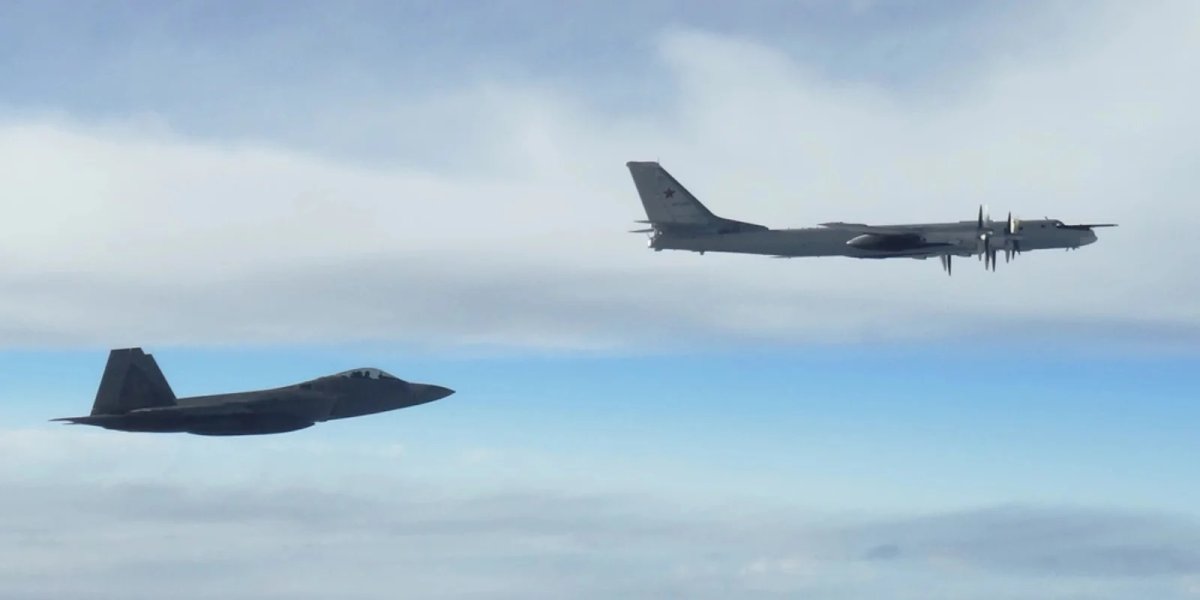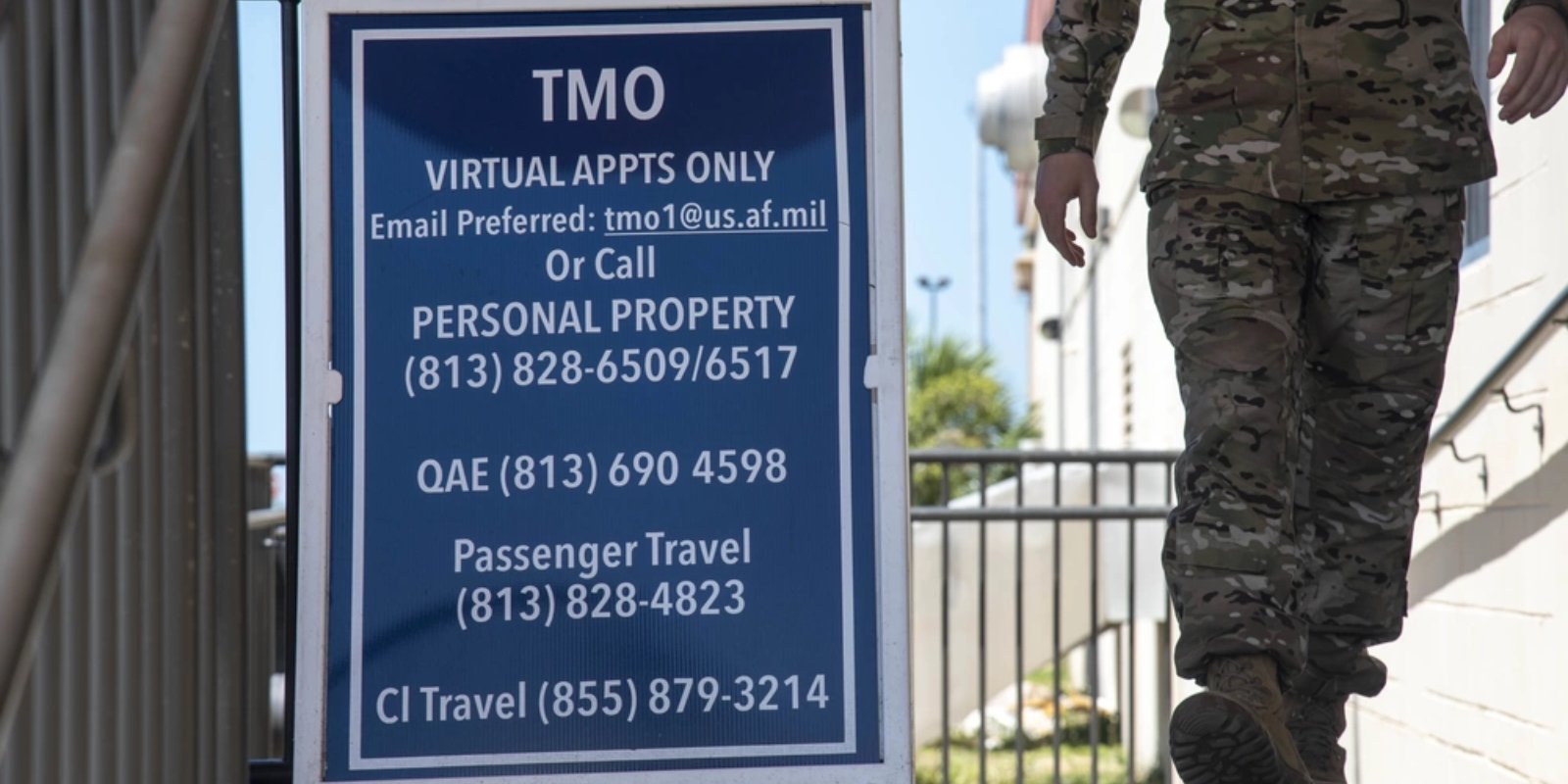RUSSIAN WARPLANES INTERCEPTED NEAR ALASKA AMID TENSIONS

My first assignment as USAF Air Battle Manager – they called us Air Weapons Directors back then – was at the Southeast Air Defense Sector (SEADS) at Tyndall AFB, Florida. Our primary mission, and the most exciting part of our job, was to detect, track, and identify aircraft that entered our nation’s Air Defense Identification Zone (ADIZ) that weren’t on an approved flight plan.
This was during the mid-to-late 1980s, and the Cold War – you may have heard about it – was still raging. The Soviet Union would regularly fly its Tu-95 long-range bomber aircraft, appropriately called Bears, between their Main Operating Bases back in Mother Russia and Forward Operating Bases in Cuba. Working as part of North American Aerospace Defense (NORAD), the SEADS, and other sectors stood vigilant 24 hours a day, 365 days a year to defend against airborne intruders.
This potentially dangerous game of cat and mouse had been going on since the 1950s, when the US and the Soviet Union emerged as the world’s two superpowers jockeying for position. The Soviets would occasionally test US air defenses, and the US would respond in kind. Fortunately, these intercepts rarely resulted in violence outside of the infamous 1960 Soviet shootdown of a US U-2 spy plane piloted by Francis Gary Powers.
Even after the Cold War ended in the early 1990s, Russian military aircraft would occasionally breach the ADIZ just to remind the US that they could still do it. This normally would happen during periods of tension between the two nations. It continues to happen today.
On September 24, Russian military aircraft entered the Alaskan ADIZ once again. This time, four Russian aircraft, two of their venerable Bear bombers escorted by two Su-35 Flanker-E fighters, were intercepted, identified, and shadowed by USAF F-16s under the control of a USAF E-3 Sentry battle management command and control aircraft. The September intercepts came one month after US fighters conducted three intercepts of a Russian surveillance aircraft that had entered the Alaskan ADIZ.

Air Defense Identification Zone (ADIZ) Explained
An ADIZ is a unilaterally declared region of airspace. Its purpose is to allow a country to identify, locate, and control aircraft for national security. An ADIZ may extend beyond a country's territory, providing more time to respond to potentially hostile aircraft. However, the concept of an ADIZ is not defined in any international treaty and is not recognized by any international body.
The United States established the first Air Defense Identification Zone (ADIZ) on December 27, 1950, shortly after President Truman declared a national emergency during the Korean War.
Currently, approximately 20 countries and regions maintain such zones, including Canada, India, Japan, Australia, Pakistan, Bangladesh, Finland, Norway, the United Kingdom, the People's Republic of China, South Korea, Taiwan, the United States, Iceland, and Iran. Additionally, Russia and North Korea operate unofficial zones.

US Interceptions of Russian Aircraft in 2023
The precise number of times NORAD forces have intercepted Russian aircraft throughout history is not publicly available, and the frequency of these intercepts fluctuates annually.
However, it is known that such incidents are routine and ongoing. These occurrences were significantly more common during the Cold War, followed by a period of reduced activity between the end of the Cold War and 2007, when Russian military aircraft rarely breached the US ADIZ.
Russia resumed its long-range aviation activities in 2007. Since then, intercepts have ranged from zero to as many as 15 per year. A representative from NORAD noted that from 2007 to April 2023, the yearly average was approximately six to seven intercepts.
Based on public reports, here is a sampling of the number of Russian flights intercepted in the Alaskan ADIZ in recent years publicly reported by NORAD:
- 2025: As of late September, NORAD had reported Russian aircraft flying near Alaska at least nine times.
- 2024: There were 12 reported flights into the Alaskan ADIZ by Russian aircraft.
- 2023: Eight intercepts were announced.
- 2022: Two incidents were announced.
- 2021: There were also two reported intercepts.
Incursions of the contiguous US ADIZ by Russian military aircraft have rarely happened since the end of the Cold War. The incursions have occurred almost exclusively in the Alaskan ADIZ.
The frequency of intercepts often varies with the timing of military exercises. Russian flights typically increase during or around U.S. and Canadian exercises, likely for intelligence gathering.
Intercept reports also tend to increase during heightened international tensions. For instance, a surge in intercepts in 2021 was attributed to rising tensions over Russian military activities in Ukraine.
Potential Future Russian ADIZ Incursions
While it is impossible to predict future Russian ADIZ incursions in Alaska, it is almost certain that Russian activity in NATO airspace will continue. The recent shootdown of “stray” Russian drones by Polish and Dutch fighters over Polish airspace less than one month ago has driven NATO to significantly bolster its air defense capabilities on its eastern flank.
Testing NATO response: Russia regularly tests NATO's air defenses in the Baltic Sea region, as evidenced by a September 2025 intercept of a Russian reconnaissance aircraft.
In the wake of a separate drone incursion over Estonia also in September 2025, several NATO allies have stated their readiness to shoot down Russian aircraft if they continue to violate their airspace. The ante has been raised.
Future Russian ADIZ incursions are likely to incorporate advanced aerospace technology, particularly the continued use of drones. Russia is developing new unmanned aircraft systems and drone swarms that can overwhelm enemy defenses.
As political tension between NATO and Russia persists over the Alliance’s support to Ukraine, this dangerous game will likely continue.
Suggested reads:
National Security Analyst
George Riebling
Air Force Veteran
George Riebling is a retired USAF Colonel with 26 years of distinguished service as an Air Battle Manager, including operational assignments across fi...
Credentials
- Retired USAF Colonel, 26 Years Service
- Former NATO Senior Executive (10 years)
- Boeing Strategy and Business Development (2 years)
- Operational experience across 5 Command and Control weapon systems
Expertise
SHARE:



